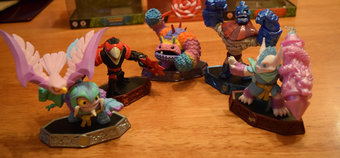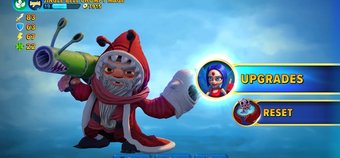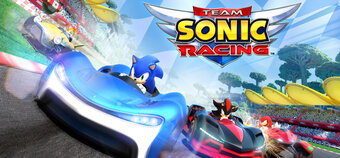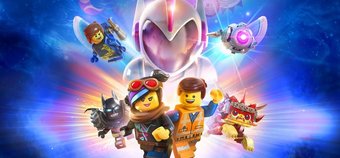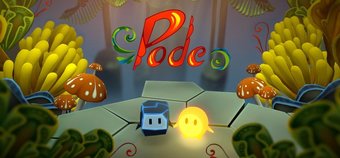The DS is, undoubtedly, one of the most popular games machines ever made, handheld or otherwise. Taking a simple concept, and using it as a basis around which to make games more accessible, Nintendo had actually made a conscious decision to shed the Game Boy name, and go with a different moniker for the console, as a kind of safety valve, in case the new system didn't become the success they were secretly hoping it would be. With three hardware revisions under its belt, some seven years later, the handheld's sold over 135m units, and it's still going strong. Hard to believe that this was something Nintendo were initially unsure about.
Having started out being just the DS, then becoming the DS Lite, DSi, and finally the DSiXL, the DS itself has seen plenty of revisions, but the 3DS is anything but. Not a new form factor with a few features bolted on, the 3DS is the fully fledged sequel to Nintendo's handheld, with new innards, new cartridges, and entirely new games - if you're still clinging on to your original DS, the time has come where you'll finally need to think about upgrading, as the DS, DS Lite, DSi and DSiXL are all being slowly phased out. The vast majority of games from here on in are going to be 3DS only.
That being said, though, there's no need to throw out your old games just yet. Despite having its own cartridges, which look slightly different to a DS one, the 3DS is fully backwards compatible with your old DS games, meaning you'll be able to carry on playing Pokemon, Layton, and Brain Training, even if you trade your old console in. As the 3DS's screens are a higher resolution than those found on any of the DSs, however, things do look a bit blurry when playing original DS games - but you can always hold Start or Select while launching the game to play it in a crisp, if tiny box.
So, what does the new system look like?

Ta dah! Aqua Blue - the best launch colour.
Available in two colours - Aqua Blue (which is amazing), and Cosmic Black (which isn't), the 3DS is a good looking piece of equipment, and obviously borrows a lot of cues from the DSi and XL. For those who appreciate the DSiXL's extra-large screen, however, the 3DS may feel like something of a step down, as although the screens are crisp, the fonts are still quite small. There's been no official word from Nintendo yet about whether a 3DSXL is in the pipeline, but we'd like to imagine that a large portion of the DS's market isn't being completely forgotten here. We'd imagine it's on its way, but Nintendo don't want to risk affecting the 3DS's sales by announcing it too soon. In the end, though, if you can get by fine with your DS, you'll likely be fine with this.
In fact, there are a lot of similarities between the 3DS and its older cousin. The layout of the A/B/X/Y buttons, and the L and R Buttons on the shoulders are the same, while the +Control Pad, and Start/Select/Power buttons are all featured, but in slightly different places. The two main additions are the Circle Pad, which you can slide around, allowing for analogue control in games, and the Home button, which allows you to bring up the console's menu at any time during gameplay.

Familiar, if you own a DSi
The console uses a modified version of the DSi's menu, which gives each application/game its very own box on the menu screen. Touch the icon for one of the built in games, and you can choose to either launch the game, or access the game's manual straight from the menu, which is useful to say the least. Across the top of the touch screen are a number of icons that let you access the 3DS's most interesting features. From left to right, we have an option for adjusting the brightness, an icon that lets you choose whether have a single row, or several rows of tiles on the screen at any one time, a pencil that represents Game Notes, a smiley face for your Friends List, a green text box for the Notifications Screen, and a globe icon for the Internet Channel, which, disappointingly, isn't available at launch. This wouldn't be a proper review if we didn't go into more detail about the various icons, however, especially as these are some of the most interesting features of the 3DS.
Game Notes is one of the most interesting new features for the 3DS, as it's effectively a digital memo pad, letting you note down important plot points, item locations, or simply what you've got to do next when you're switching a game off for the night. Zelda on the DS had a similar function to this, but it was limited to that specific game only - in the 3DS, however, the Game Notes function is built right into the console's menu, and can be accessed at any time, with any 3DS game. Whenever you feel the urge to take a note, all you have to do is press the Home button, beneath the touch screen, and you'll bring up console's menu. Press the Game Notes button, and it'll show you a still screenshot of your paused game on the top screen, and a selection of note panels below. It's an incredibly useful feature - especially for people like us, writing reviews - although the limitation of sixteen notes is a bit disappointing. Especially with massive handwriting like ours.
The next icon, the Friends List, is part of Nintendo's new push towards an easier to use, more integrated online system. Rather than having to remember a friend code per game if you wanted to play online - which was awkward to say the least - as we discovered a while back, the 3DS only has a single friend code per console. If you want to register a friend, all you have to do is press the giant Register Friend button on the Friends List, and either input the code, or, if you're standing in the same room as the friend, just press "Local", and sit back and watch the 3DS do all the work. Once you've done that, you'll be able to play any game online against your friend, without having to input a specific friend code per game. It's certainly a step forwards. If you want to check on what your friends are doing, whether you're playing a game, or just browsing the menu, all you need to do is touch the Friends List icon, and you'll be able to see exactly what your friends are doing. Disappointingly, there isn't all that much use to this at the moment, as you can't actually send your friend a message to invite them to play a game - but at least it's a start.

The Notification LED - saves you having to open your system.
The next feature, the Notifications screen, is an essential part of StreetPass and SpotPass. These two features are two of Nintendo's proudest facets of the 3DS - so it's disappointing to not see them being used a lot more.
We went into a lot of detail about StreetPass in our recent article. In a nutshell, this is Nintendo's way of encouraging people to be sociable with their 3DS. If you've enabled StreetPass in a compatible game (and most launch titles support it, from Street Fighter IV, to Pro Evolution Soccer and Nintendogs + Cats), when you're out and about, if you happen to walk past a person who owns one of the same games as you, data will be transmitted between the two of you. Whether it's some figures you've collected having a random fight in Street Fighter IV, or a random cat or dog coming to visit, as in Nintendogs + Cats, there's a huge variety of ways different games utilise StreetPass - and it makes it pretty interesting to keep your 3DS on you, as you never know who you'll bump into.
SpotPass, on the other hand, is meant to be Nintendo's way of keeping you up to date with all the latest Nintendo news, and other amazing content. With your WiFi switch turned on, your 3DS will connect to the neartest WiFi hotspot (or your home router), to deliver the latest messages and updates from Nintendo straight to your console. Whether it's demos of new games, promotional messages, new levels, or ghost data for games like Mario Kart, your console's meant to automatically download these new add-ons and updates without you pressing a button. Unfortunately, though, some six weeks on, we've only actually received a single message from Nintendo, about a system update, which is disappointing to say the least. We expected to receive a cool trailer and message every time a game gets released - like a regular Friday trailer showing you what's out - but as of the time of writing, this feature remains sadly underused.
When you receive a message, the Notification LED on the outside of the 3DS will blink, either green for a StreetPass message, or blue for a SpotPass message, letting you know without opening your system that it's time to take a trip to the Notification Channel, and see what you've received.
Apart from the cool menu features, the 3DS comes with a wide range of built in software too. Like the DSi before it, the system allows you to take pictures using its built in cameras - although with the 3DS, there's a twist. Rather than simply taking bog standard normal pictures, the 3DS lets you take photos in full, popping-out-of-the-screen 3D. It's a fairly subtle effect, and the pictures you take are a bit blurry, thanks to the low resolution of the camera, but it's a cool feature to say the least - and with all the usual options for messing around with your photos, you can waste hours in the program just distorting your other half (or cat's) face. Also featured is the Nintendo 3DS Sound application, which lets you play back MP3s, and record people talking, before letting you distort the recording to produce hilarious results.

Disappointingly, you've still got to choose a lot of features yourself. And that looks nothing like him/
Next up, are the Miis, which make their 3DS debut after having been an essential part of the Wii since day one. As well as letting you create a virtual representation of yourself, choosing from many more options than are available to you on the Wii, you can even use the 3DS's camera to take a photo of yourself, and have the console make your Mii for you (although it doesn't always come out looking quite right). For those who spent hours toiling away at their virtual representation on the Wii, however, you can even choose to simply download one you've already made from your Wii - which is useful if you're like us, and just can't get yourself looking quite "right".
The StreetPass Mii Plaza, on the other hand, is a useful little built-in program that collects the Miis you've met when you've been out and about. Far from simply a showroom, though, the Miis you've met serve a far greater purpose, as they can take part in a pair of surprisingly fun minigames. StreetPass Quest is the better of the two, which takes the Miis you've met that day, and assembles them as your army in a mini-RPG, pitting them in a series of turn based battles against a variety of monsters, as they fight to rescue... well... you, as you've managed to get yourself kidnapped and imprisoned in a tower. You really should look after yourself better. Puzzle Swap, on the other hand, basically sees you building a collection of Nintendo themed jigsaws by collecting the pieces you're missing from the Miis that you meet during the day. Of course, this requires you to keep meeting Miis who have pieces that you don't - so you'd better get out there, and keep your wireless switched on!
Meeting Miis isn't the only way to progress through either StreetPass Quest or Puzzle swap, however, as you can always buy new pieces, or hire new warriors, by using Game Coins - which handily brings us onto the next section - the Activity Log.

Keep your 3DS on you, and you can check how active you've been during the day.
The Activity Log keeps a track of how long you've used your 3DS for that day, and also, how far you've walked, using the 3DS's built in pedometer. Every 100 steps you walk, you'll be rewarded with a Game Coin, up to a maximum of 10 coins per day. It's a great little incentive to keep you walking, although perhaps a bit disappointing that you can't set your step length, etc, and use it as a true pedometer.
Amazingly, though, the built-in software doesn't end there. It feels like we've been writing for ages, and we haven't even touched on the built-in games! Making up the numbers are Face Raiders, and AR Games - both of which are, technically, Augmented Reality games, even if Face Raiders doesn't explicitly state so in its title. You can find more information about Face Raiders here, but basically, this is a game that takes a screenshot of either your, or a friend's face, and then turns it into an enemy in the game. Using the 3DS's camera to create a game stage in your living room - or wherever else you're standing - it's up to you to shoot down the enemies that fly towards you, by rotating your 3DS, and hammering A. It's hilarious, and deserves a lot more explanation than we can give it here - head over to our previous article to learn more.
AR Games, on the other hand, is a collection of Augmented Reality games that are similar to Face Raiders, but require the use of an AR Card. The 3DS comes bundled with six of these, which, when you point your 3DS at them, will make something amazing happen. The best game, which uses the question mark card, makes a dragon pop out of your table/window ledge/cat, or wherever else you've put the card, which you then have to physically move around, in order to shoot at its weak points. It's almost impossible to explain, but very, very cool when you see it in action. The other cards can be used to take photos of various Nintendo characters in and around your house - and if Nintendo don't make a collectible series of Pokémon ones, they're really missing out.
So much more than a gimmick machine, the 3DS may have 3D in its name, but it doesn't rely on it exclusively - as we've kind of managed to prove by getting to 2,000 words into an article without even mentioning it. And there's a good reason for that. Firstly, it won't be able to be used by around 10% of the people in the country, who are classed as being 3D blind. And secondly, is that it's quality so heavily dependent on the software.
In some games, the 3D simply doesn't make that much difference (as seen in Rabbids 3D), whereas in others, it makes so much difference, the 3DS's screens simply can't cope with it. Providing glasses-free 3D has been a big selling point for the Nintendo handheld, but it always sounded too good to be true - and for good reason. It is. The screen works by somehow transmitting a different image to each eye, using a technology known as a parallax barrier. It's especially interesting to play with the 3D slider, which allows you adjust the level, and depth of the 3D to make it suitable for you, from the barely there, to the "wow, look at how far the horizon goes". The only problem is, many times, it simply doesn't work.
On Pilotwings at night, bright objects seem to triple, with ghost versions floating to either side of them, which eventually converge as you approach them. In Ridge Racer 3D, the names of your opponents seem to blur crazily at either side. Numerous games had problems with this sort of semi-double vision, which instantly made us worry it was our eyes. We actually spent around a week or so researching the problems we were having with the 3DS, as we couldn't understand it, and why no-one else was complaining about it. Turns out, it's not just us. The 3DS suffers from a well known flaw with 3D screens known as "cross talking". What happens is that, on colours that are high in contrast, some of the right eye image will come through onto the left eye screen, resulting in the bizarre phenomenon we saw. You can test it for yourself if you find a game with bad blurring - like Pilotwings, or Rayman 3D, and close one eye. You'll see the double image in your one eye, proving it's not a problem with your eyes working together, and instead is a problem with the screen.

This is our artist's impression of the effect you get. It's remarkably distracting on some games.
There are plenty of upsides to this problem, however. The first is that you don't need to view games in 3D, and with the 3D slider turned off, it isn't a problem. The games are all still just as playable, and they still look amazing - just not quite as "good" as with 3D turned on. The second is that, with some clever game design, it'll be possible to work around this issue by being careful when it comes to areas of high contrast - and we expect we'll see this improve with time.
The other issue with the 3DS, however, is a far bigger problem, as it isn't so simple to just switch off. To put it bluntly, the 3DS has a crap battery life. It's pitiful. As we found out in our 3DS battery life test, your 3DS's battery will last anywhere between 3 and 5 hours, depending on how bright the backlight is, and if you've got the 3D turned on. This, as compared to the DS's 10 hours, the DSi's 14 hours, the DSiXL's 17 hours, and the DS Lite's whopping 19 hours. Although it's comparable with the iPhone, it still seem a huge step back for the Nintendo handheld, as it effectively means if you want to play a game for any length of time, you'd best be sure you're near a charger. And while third party batteries are already on sale which double the console's battery life, that's not really the point - the handheld should come with a battery that will allow it to play games for longer than the average of four hours - or at the very least, take less than three hours to charge. I think most would have gladly accepted a slightly fatter console in return for an extra few hours of juice - it would have been a small price to pay. With warning in the manual about the battery losing up to 75% of its capacity by the time you've charged it 700 times (which, at the rate we're going, doesn't seem all that far away), the future seems somewhat grim for the 3DS's battery. It's never nice to be playing a game and constantly having to worry about when the system's going to die, yet the 3DS makes you keep that in the back of your mind - something no other Nintendo handheld's done before. With any luck, Nintendo will soon bow to public pressure, and release an extra long lasting battery, that charges a lot quicker, but as it stands, the battery life is the console's biggest disappointment. Anyway. Back to something more positive. For parents, the 3DS comes with some of the strongest parental controls we've seen in a console of any sort, which allow you to restrict the games your children play according to their PEGI/BBFC rating, and block the 3D effect (which Nintendo recommend for children aged 6 and under), as well as preventing the exchange of certain details and use of internet related features. If you want more information, or feel like you could use a hand, we've written a full tutorial for setting up the 3DS Parental Controls, so feel free to mosey on over there for a more in depth look.
As with most Nintendo consoles, the 3DS allows for multiplayer of many varieties, from the bog standard local wireless play, to online over WiFi. You can turn your 3DS's wireless connection on or off at any time by sliding the wireless switch on the side of the console, which is at least a step up from the DSi. Download Play also makes a welcome return here, letting people who have two 3DS's, but only one copy of a game play together, console permitting.

You want this game. LOOK AT THEIR EYES GAWWWWW.
And that brings us on to easily the most important part of any console - the games. After all, a console is only as good as it's games, and it's here the 3DS starts to excel. Amongst its entire launch line-up, there's not a truly awful game, with some very good examples amongst them - Rabbids 3D, LEGO Star Wars 3, Super Street Fighter IV and Nintendogs + Cats amongst them. It's a strong line-up, that almost literally has something for everyone, and one that hopefully bodes well for the system's future. With a new Professor Layton, and possibly a new Pokemon game around the corner, there's plenty yet to come. While the 3D effects may not set the world on fire, and they don't actually make the games that much better, as a successor to the DS, the 3DS gets almost everything right. The social features are great, the pedometer's a nice touch, and the games are already leading the pack. The only real problem with the console just happens to be the most important thing - the battery life - and that's something we hope Nintendo will be releasing a solution for sooner rather than later. We'd take a fatter, yet still portable console over having to sit near a plug socket to play any day.






